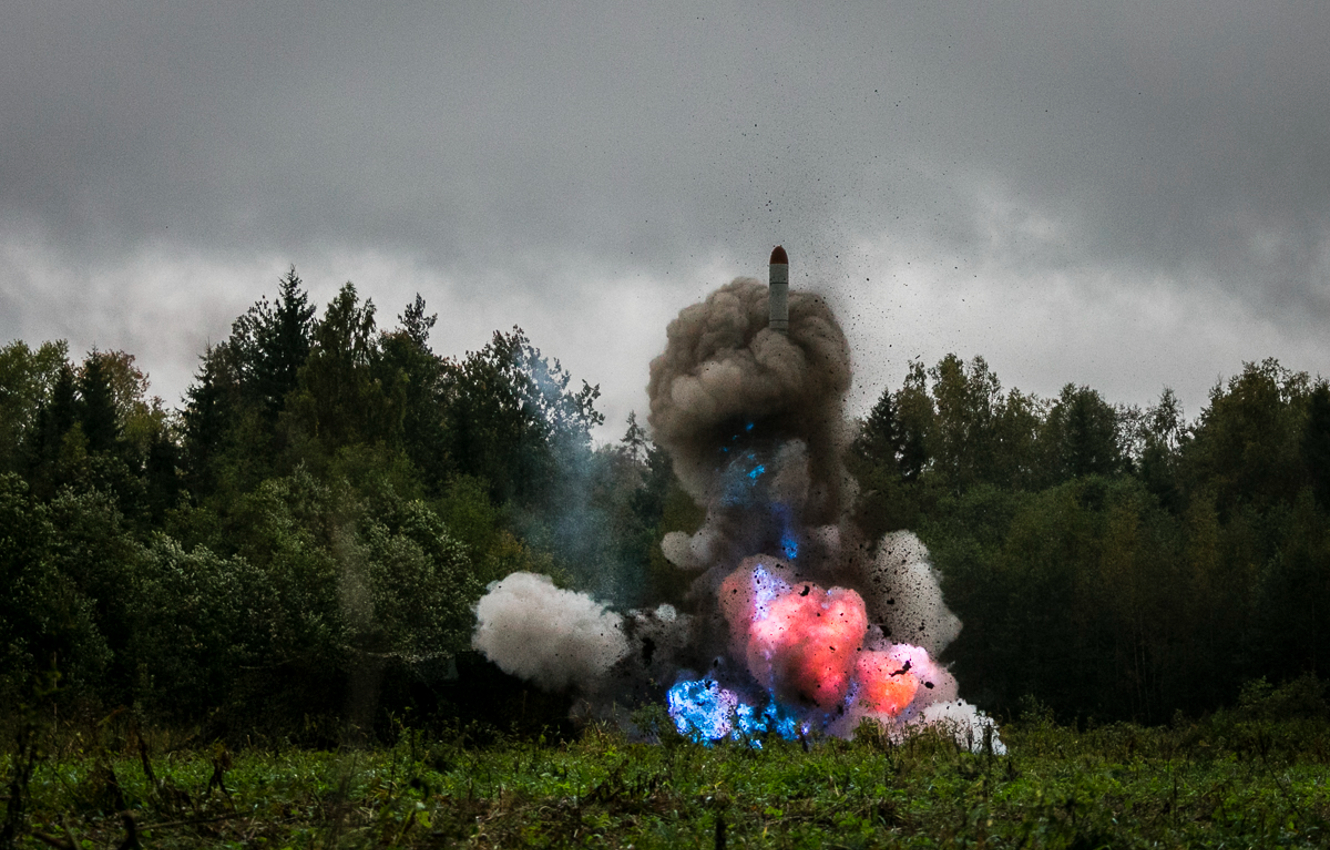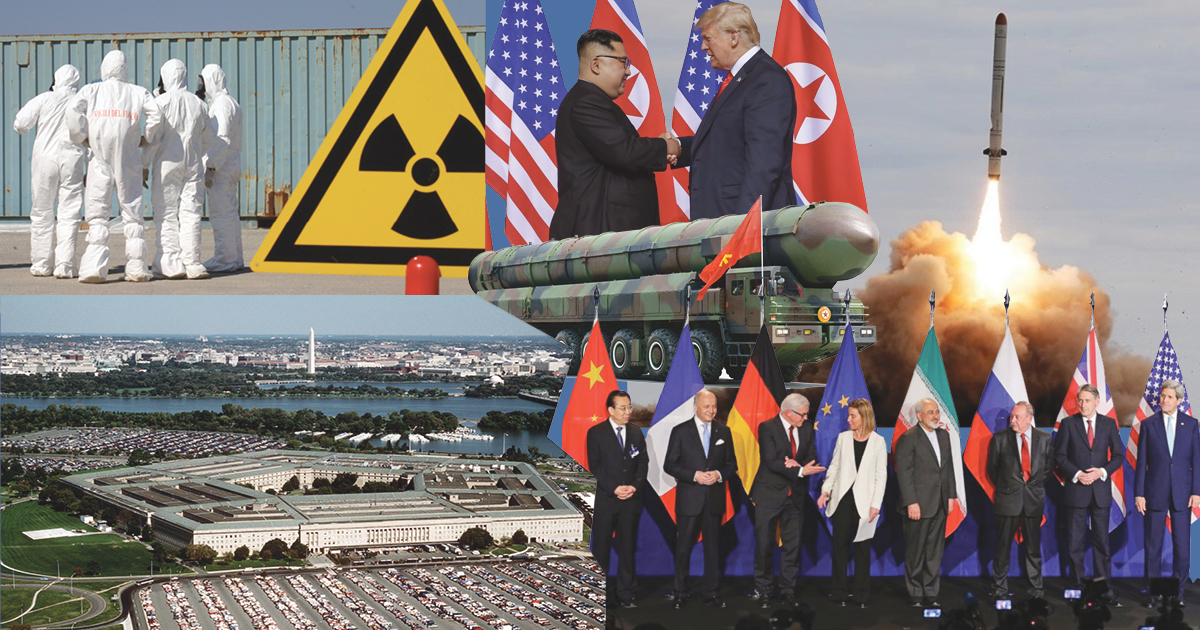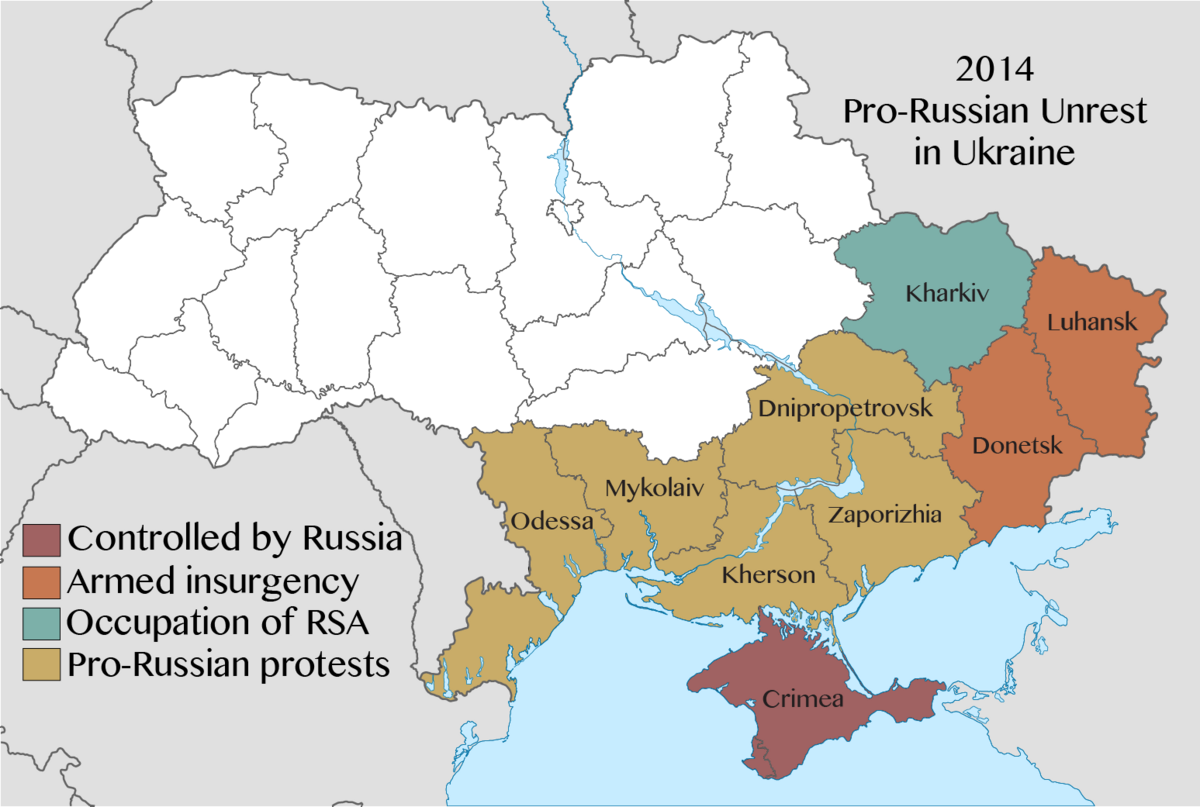Admiral Rockwell Tory
Diamond Member
Why would you think it was fake? Did you take an extra stupid pill today?
Follow along with the video below to see how to install our site as a web app on your home screen.

Note: This feature currently requires accessing the site using the built-in Safari browser.
Why would you think it was fake? Did you take an extra stupid pill today?
Why would we lend bravery?So, we should only defend oil tycoons and tyrants? Freedom used to mean something to Americans. Kuwait was not a NATO member and neither was England and France in 1940. We freed China from Japan in 1945. The the fucking communists overthrew China and only the Taiwan Island remains as the one true free China. I'll no longer sing the national anthem because if we cannot better our responses to Russia and china we are no longer the lend of the brave, and we will soon no longer be the home of the free. Damn Biden and the fools who are advising him. More importantly god damn communists and socialists the world over.

I have been trying to explain this to many people. We promised one thing, and then double crossed Russia.
Now that’s fine, but consequences can come from this sort of diplomacy.
I believe Gorbachev, no promises were made.I wasnt there, I can only go by what others say.
You haven't heard about the fucked-up Iran deal yet?Ukraine is not in NATO - yet. That's what this most recent Biden fuck up is about.
25th Amendment-' yesterday!!You haven't heard about the fucked-up Iran deal yet?
Apparently Biden is letting Russia negotiate the Iran deal?! WTF??
And Russia says we broke the missile treaty first. It hasn't been Russia encircling us over the last 30 years with missile bases, it has been NATO encircling Russia in former client states since the fall of the Soviet Union, violating a core promise by the United States when the Soviet army peacefully withdrew from Eastern Europe after the fall of the Berlin Wall.
Source should satisfy you: libtard NPR:

4 things Russia wants right now
Russia forced the West into a flurry of diplomacy with its massive troop buildup near Ukraine. Here's a short guide to what the Kremlin wants.www.npr.org
Then in 2014 the US overthrows a democratically elected government and replaces it with one hostile to Russia, in the Maiden Revolution.
Stop peddling your Neocon bullcrap version of history. Even AOC and Bernie Sanders are against your neoliberal tards.

AOC-linked group blames US for Russia invasion and demands end to NATO
Immediately after demanding a ceasefire the group also called for an end to 'further intervention' -- even as Kyiv's officials invite Europeans and other allies to come take up arms and fight.www.dailymail.co.uk
You are one of the very few posters here thst gets this and has done his homework.excellent stuff.Ok this is going a tad too far in me coming across so-called intelligent people really believing this bull, like Putin is Hitler and Zelensky is Winston effing Churchill. This is a regional quarrel. I don't like people dying but Putin had his reasons. Imagine Russia putting nuclear missiles in Mexico. This article written by a US Army major at the School of Advanced Military Studies, Fort Leavenworth, Kansas. Putin last December, from post: “Are we putting our rockets near the borders of the United States? No we’re not. It’s the U.S. with its rockets coming to our doorstep.”

Why Intermediate-Range Missiles Are a Focal Point in the Ukraine Crisis - War on the Rocks
In seeking to explain why there are currently 100,000 Russian troops on the Ukrainian border, commentators have invoked everything from the role of NATOwarontherocks.com
WHY INTERMEDIATE-RANGE MISSILES ARE A FOCAL POINT IN THE UKRAINE CRISIS
BRENNAN DEVERAUX JANUARY 28, 2022
In seeking to explain why there are currently 100,000 Russian troops on the Ukrainian border, commentators have invoked everything from the role of NATO expansion in the 1990s to the history of Kievan Rus in the 9th century. But a more recent development deserves discussion as well: America’s withdrawal from the Intermediate-Range Nuclear Forces Treaty in 2019.
If nothing else, Moscow has been eager to highlight this factor. Russia’s proposal for ending the current crisis stipulates that the United States “not deploy land-based intermediate- and short-range missiles in areas allowing them to reach [Russian territory].” One need not take Russian rhetoric at face value to consider how America’s potential reintroduction of formerly banned missiles to Europe influences Russia’s decision-making on Ukraine. Examining the United States and Russia’s differing responses to the demise of the Intermediate-Range Nuclear Forces Treaty highlights the interconnectedness of these events and the failure of the nations to communicate. While Russia’s threats are fundamentally tied to maintaining influence over Ukraine and deterring NATO expansion, a renewed focus on arms control can still play a role in finding a peaceful resolution.
The Fate of the Treaty
The Intermediate-Range Nuclear Forces Treaty was a bilateral agreement between the United States and the Soviet Union, signed in 1987, which eliminated a specific delivery system: surface-to-surface missiles with ranges between 500 and 5,500 kilometers, henceforth referred to as theater-support missiles. Washington withdrew from the treaty in 2019, citing a series of Russian violations while also emphasizing the benefits that the new missiles could provide the United States in Europe and, perhaps more importantly, Asia.
The treaty’s end paved the way for the United States to reintroduce these missiles to the battlefield, this time as conventional strike assets instead of the nuclear-armed versions that had dominated the Cold War. Because the U.S. Army had previously established long-range precision fires as its top modernization priority, the associated loosening of missile restrictions created an innovation opportunity for U.S. forces. Moreover, China was never a signatory, which had allowed it to become a world leader in intermediate-range missile technology. This missile asymmetry had been a criticism of the treaty for years, likely influencing the U.S. decision to withdraw.
Since the United States withdrew from the treaty, the Army has embarked on numerous projects at varying ranges, including a moderate range increase from its current systems to a 500–600-kilometer range precision strike missile and a more strategically designed 2,700-kilometer range hypersonic missile. Additionally, future long-range strike capabilities have begun to influence emerging U.S. military doctrine, which emphasizes their importance in neutralizing anti-access systems. Overall, while the treaty’s demise may have been controversial internationally, domestically the U.S. military was quick to capitalize on its newfound freedom. Instead of internal debates on the strategic implications of reintroducing these missiles, the public military discourse centered on which service would have employment and development responsibility. This implied that the new missiles’ eventual employment and forward basing were foregone conclusions.
Edited to comply with copyright


If Russia had not broken the treaty, it might not have been dumped. Also, the term intermediat range, when talking about missiles, pretty much puts them in range of Moscow from anywhere on the European continent, so basically Puty wanted to be the only one that could have them.
You can peddle that fish somewhere else.
Putin to Neocons Trying to Put Intermediate Range Missiles on His Ukraine Border

Biden offered to negotiate removing short range nukes from eastern europe and the Russia's western border.Ok this is going a tad too far in me coming across so-called intelligent people really believing this bull, like Putin is Hitler and Zelensky is Winston effing Churchill. This is a regional quarrel. I don't like people dying but Putin had his reasons. Imagine Russia putting nuclear missiles in Mexico. This article written by a US Army major at the School of Advanced Military Studies, Fort Leavenworth, Kansas. Putin last December, from post: “Are we putting our rockets near the borders of the United States? No we’re not. It’s the U.S. with its rockets coming to our doorstep.”

Why Intermediate-Range Missiles Are a Focal Point in the Ukraine Crisis - War on the Rocks
In seeking to explain why there are currently 100,000 Russian troops on the Ukrainian border, commentators have invoked everything from the role of NATOwarontherocks.com
WHY INTERMEDIATE-RANGE MISSILES ARE A FOCAL POINT IN THE UKRAINE CRISIS
BRENNAN DEVERAUX JANUARY 28, 2022
In seeking to explain why there are currently 100,000 Russian troops on the Ukrainian border, commentators have invoked everything from the role of NATO expansion in the 1990s to the history of Kievan Rus in the 9th century. But a more recent development deserves discussion as well: America’s withdrawal from the Intermediate-Range Nuclear Forces Treaty in 2019.
If nothing else, Moscow has been eager to highlight this factor. Russia’s proposal for ending the current crisis stipulates that the United States “not deploy land-based intermediate- and short-range missiles in areas allowing them to reach [Russian territory].” One need not take Russian rhetoric at face value to consider how America’s potential reintroduction of formerly banned missiles to Europe influences Russia’s decision-making on Ukraine. Examining the United States and Russia’s differing responses to the demise of the Intermediate-Range Nuclear Forces Treaty highlights the interconnectedness of these events and the failure of the nations to communicate. While Russia’s threats are fundamentally tied to maintaining influence over Ukraine and deterring NATO expansion, a renewed focus on arms control can still play a role in finding a peaceful resolution.
The Fate of the Treaty
The Intermediate-Range Nuclear Forces Treaty was a bilateral agreement between the United States and the Soviet Union, signed in 1987, which eliminated a specific delivery system: surface-to-surface missiles with ranges between 500 and 5,500 kilometers, henceforth referred to as theater-support missiles. Washington withdrew from the treaty in 2019, citing a series of Russian violations while also emphasizing the benefits that the new missiles could provide the United States in Europe and, perhaps more importantly, Asia.
The treaty’s end paved the way for the United States to reintroduce these missiles to the battlefield, this time as conventional strike assets instead of the nuclear-armed versions that had dominated the Cold War. Because the U.S. Army had previously established long-range precision fires as its top modernization priority, the associated loosening of missile restrictions created an innovation opportunity for U.S. forces. Moreover, China was never a signatory, which had allowed it to become a world leader in intermediate-range missile technology. This missile asymmetry had been a criticism of the treaty for years, likely influencing the U.S. decision to withdraw.
Since the United States withdrew from the treaty, the Army has embarked on numerous projects at varying ranges, including a moderate range increase from its current systems to a 500–600-kilometer range precision strike missile and a more strategically designed 2,700-kilometer range hypersonic missile. Additionally, future long-range strike capabilities have begun to influence emerging U.S. military doctrine, which emphasizes their importance in neutralizing anti-access systems. Overall, while the treaty’s demise may have been controversial internationally, domestically the U.S. military was quick to capitalize on its newfound freedom. Instead of internal debates on the strategic implications of reintroducing these missiles, the public military discourse centered on which service would have employment and development responsibility. This implied that the new missiles’ eventual employment and forward basing were foregone conclusions.
Edited to comply with copyright
LOL I said intermediate, 500 mile missiles capable of hitting Moscow...link please.Biden offered to negotiate removing short range nukes from eastern europe and the Russia's western border.
Hey Dipshit-- -- how are "neocons" putting missiles on the Ukraine border?
Who is the neocon in charge of missiles, Joe Biddum, Kammy Harris, Anthony Blinken or the Europeans?
There was never any proposal to put nukes in Ukraine by anyone other than the Russians.Ok this is going a tad too far in me coming across so-called intelligent people really believing this bull, like Putin is Hitler and Zelensky is Winston effing Churchill. This is a regional quarrel. I don't like people dying but Putin had his reasons. Imagine Russia putting nuclear missiles in Mexico. This article written by a US Army major at the School of Advanced Military Studies, Fort Leavenworth, Kansas. Putin last December, from post: “Are we putting our rockets near the borders of the United States? No we’re not. It’s the U.S. with its rockets coming to our doorstep.”

Why Intermediate-Range Missiles Are a Focal Point in the Ukraine Crisis - War on the Rocks
In seeking to explain why there are currently 100,000 Russian troops on the Ukrainian border, commentators have invoked everything from the role of NATOwarontherocks.com
WHY INTERMEDIATE-RANGE MISSILES ARE A FOCAL POINT IN THE UKRAINE CRISIS
BRENNAN DEVERAUX JANUARY 28, 2022
In seeking to explain why there are currently 100,000 Russian troops on the Ukrainian border, commentators have invoked everything from the role of NATO expansion in the 1990s to the history of Kievan Rus in the 9th century. But a more recent development deserves discussion as well: America’s withdrawal from the Intermediate-Range Nuclear Forces Treaty in 2019.
If nothing else, Moscow has been eager to highlight this factor. Russia’s proposal for ending the current crisis stipulates that the United States “not deploy land-based intermediate- and short-range missiles in areas allowing them to reach [Russian territory].” One need not take Russian rhetoric at face value to consider how America’s potential reintroduction of formerly banned missiles to Europe influences Russia’s decision-making on Ukraine. Examining the United States and Russia’s differing responses to the demise of the Intermediate-Range Nuclear Forces Treaty highlights the interconnectedness of these events and the failure of the nations to communicate. While Russia’s threats are fundamentally tied to maintaining influence over Ukraine and deterring NATO expansion, a renewed focus on arms control can still play a role in finding a peaceful resolution.
The Fate of the Treaty
The Intermediate-Range Nuclear Forces Treaty was a bilateral agreement between the United States and the Soviet Union, signed in 1987, which eliminated a specific delivery system: surface-to-surface missiles with ranges between 500 and 5,500 kilometers, henceforth referred to as theater-support missiles. Washington withdrew from the treaty in 2019, citing a series of Russian violations while also emphasizing the benefits that the new missiles could provide the United States in Europe and, perhaps more importantly, Asia.
The treaty’s end paved the way for the United States to reintroduce these missiles to the battlefield, this time as conventional strike assets instead of the nuclear-armed versions that had dominated the Cold War. Because the U.S. Army had previously established long-range precision fires as its top modernization priority, the associated loosening of missile restrictions created an innovation opportunity for U.S. forces. Moreover, China was never a signatory, which had allowed it to become a world leader in intermediate-range missile technology. This missile asymmetry had been a criticism of the treaty for years, likely influencing the U.S. decision to withdraw.
Since the United States withdrew from the treaty, the Army has embarked on numerous projects at varying ranges, including a moderate range increase from its current systems to a 500–600-kilometer range precision strike missile and a more strategically designed 2,700-kilometer range hypersonic missile. Additionally, future long-range strike capabilities have begun to influence emerging U.S. military doctrine, which emphasizes their importance in neutralizing anti-access systems. Overall, while the treaty’s demise may have been controversial internationally, domestically the U.S. military was quick to capitalize on its newfound freedom. Instead of internal debates on the strategic implications of reintroducing these missiles, the public military discourse centered on which service would have employment and development responsibility. This implied that the new missiles’ eventual employment and forward basing were foregone conclusions.
Edited to comply with copyright
There are no nukes, much less short or intermediate range missiles in any of the former Soviet Republics with perhaps the exception of Belarus which is in Putin's back pocket.Biden offered to negotiate removing short range nukes from eastern europe and the Russia's western border.

The US Army has no medium or long range nukes period much less in Eastern Europe.The treaty’s end paved the way for the United States to reintroduce these missiles to the battlefield, this time as conventional strike assets instead of the nuclear-armed versions that had dominated the Cold War. Because the U.S. Army had previously established long-range precision fires as its top modernization priority, the associated loosening of missile restrictions created an innovation opportunity for U.S. forces. Moreover, China was never a signatory, which had allowed it to become a world leader in intermediate-range missile technology. This missile asymmetry had been a criticism of the treaty for years, likely influencing the U.S. decision to withdraw.
I hate to break it to you but if the Russians are saying it, it's almost certainly a lie.And Russia says we broke the missile treaty first. It hasn't been Russia encircling us over the last 30 years with missile bases, it has been NATO encircling Russia in former client states since the fall of the Soviet Union, violating a core promise by the United States when the Soviet army peacefully withdrew from Eastern Europe after the fall of the Berlin Wall.
Source should satisfy you: libtard NPR:

4 things Russia wants right now
Russia forced the West into a flurry of diplomacy with its massive troop buildup near Ukraine. Here's a short guide to what the Kremlin wants.www.npr.org
Then in 2014 the US overthrows a democratically elected government and replaces it with one hostile to Russia, in the Maiden Revolution.
Stop peddling your Neocon bullcrap version of history. Even AOC and Bernie Sanders are against your neoliberal tards.

AOC-linked group blames US for Russia invasion and demands end to NATO
Immediately after demanding a ceasefire the group also called for an end to 'further intervention' -- even as Kyiv's officials invite Europeans and other allies to come take up arms and fight.www.dailymail.co.uk
I hate to break it to you but if the Russians are saying it, it's almost certainly a lie.
Russian insurgents and merc's started the whole fray in Donbass, not the US. The US became involved only after Russian meddling threatened to destabilize the country.
You are NEVER going to remove Biden. Members of his Cabinet are worse that he is!25th Amendment-' yesterday!!
We're paying $4.50/gallon for gas - and supporting Iran?! Madness!
What I am is correct.I would say if the US major media is saying something, it is almost certainly a lie. Or are you one of those poor souls who really believes Jeffrey Epstein killed himself? Because if you don't you are officially a conspiracy theorist.
